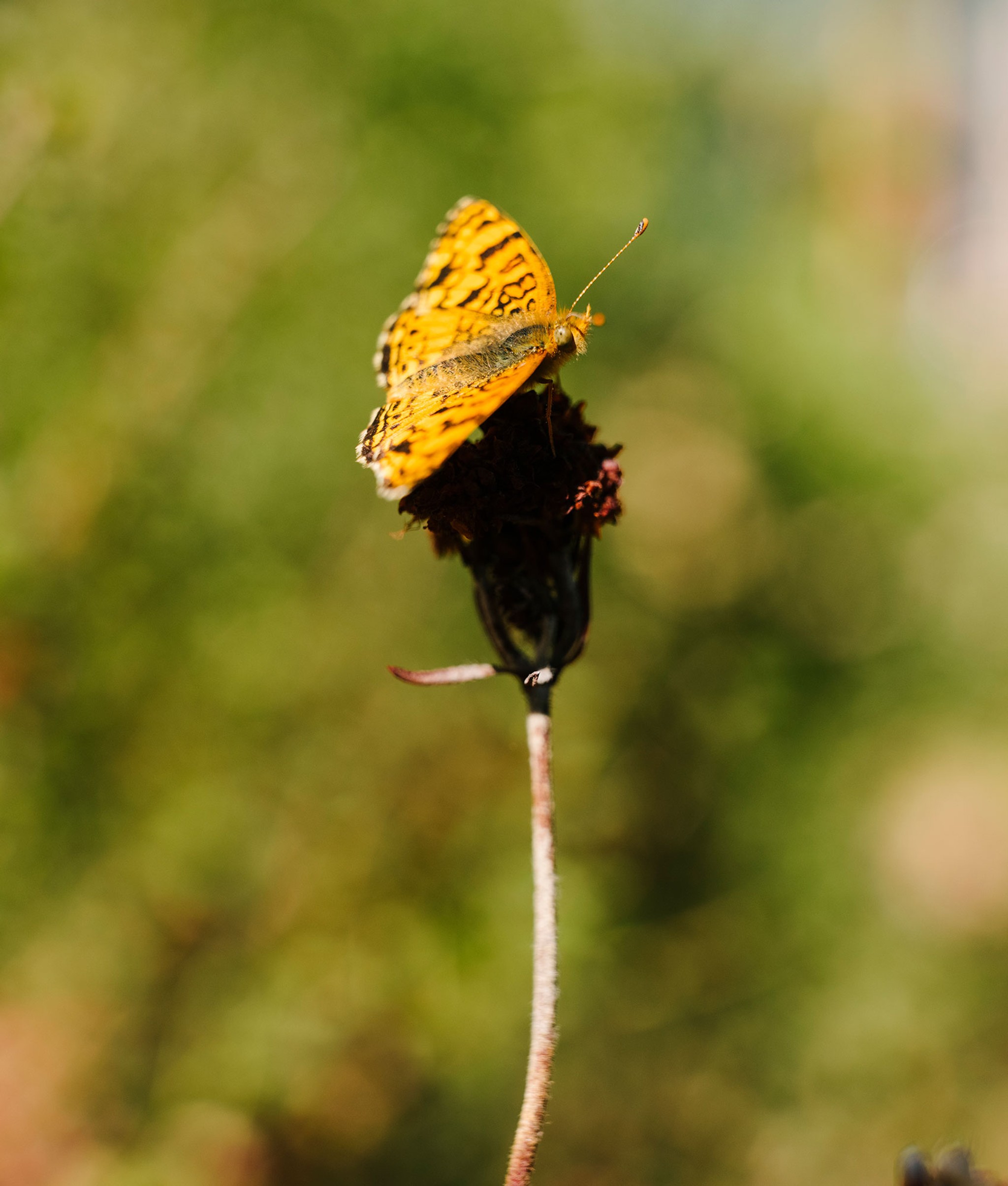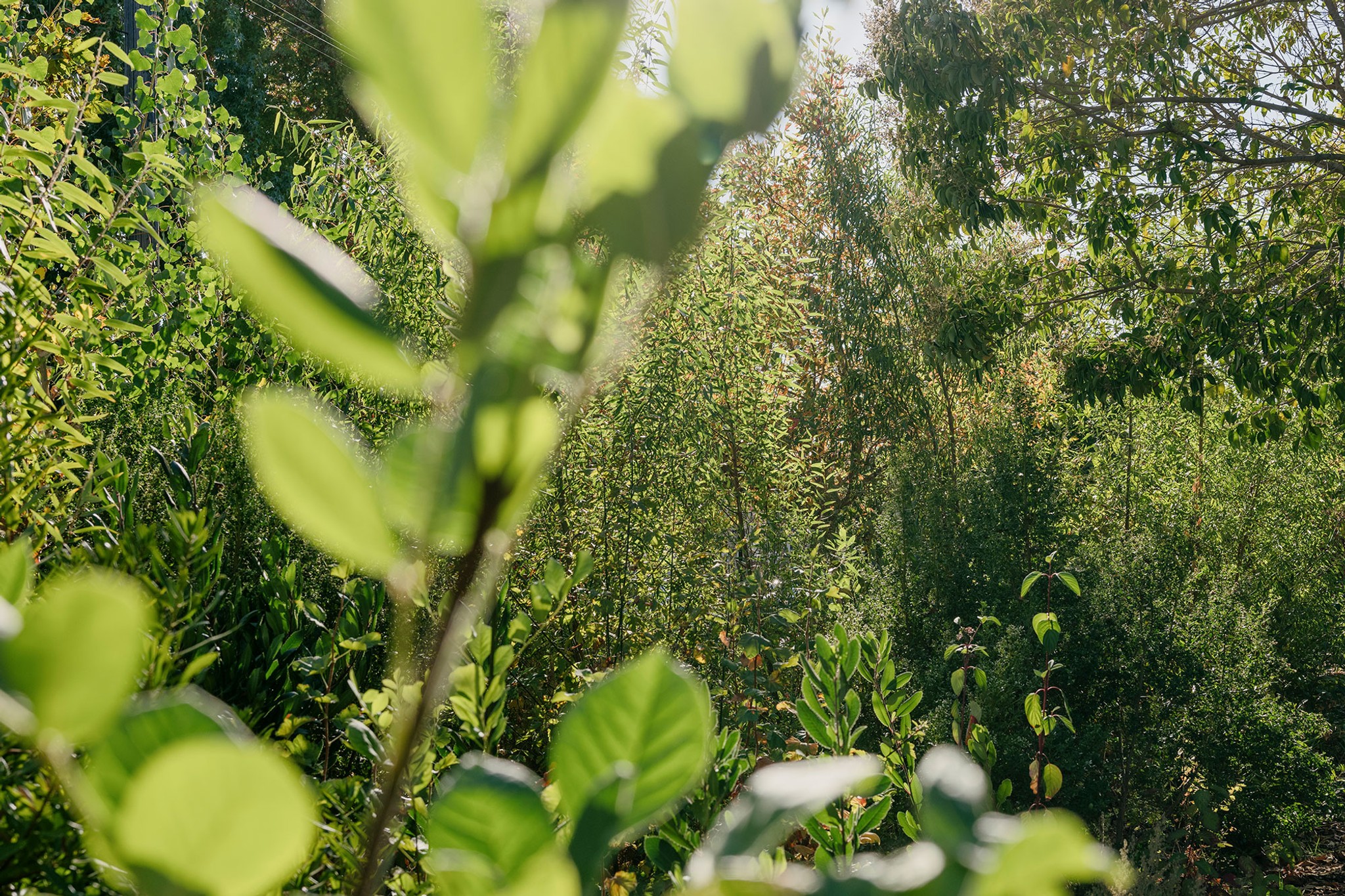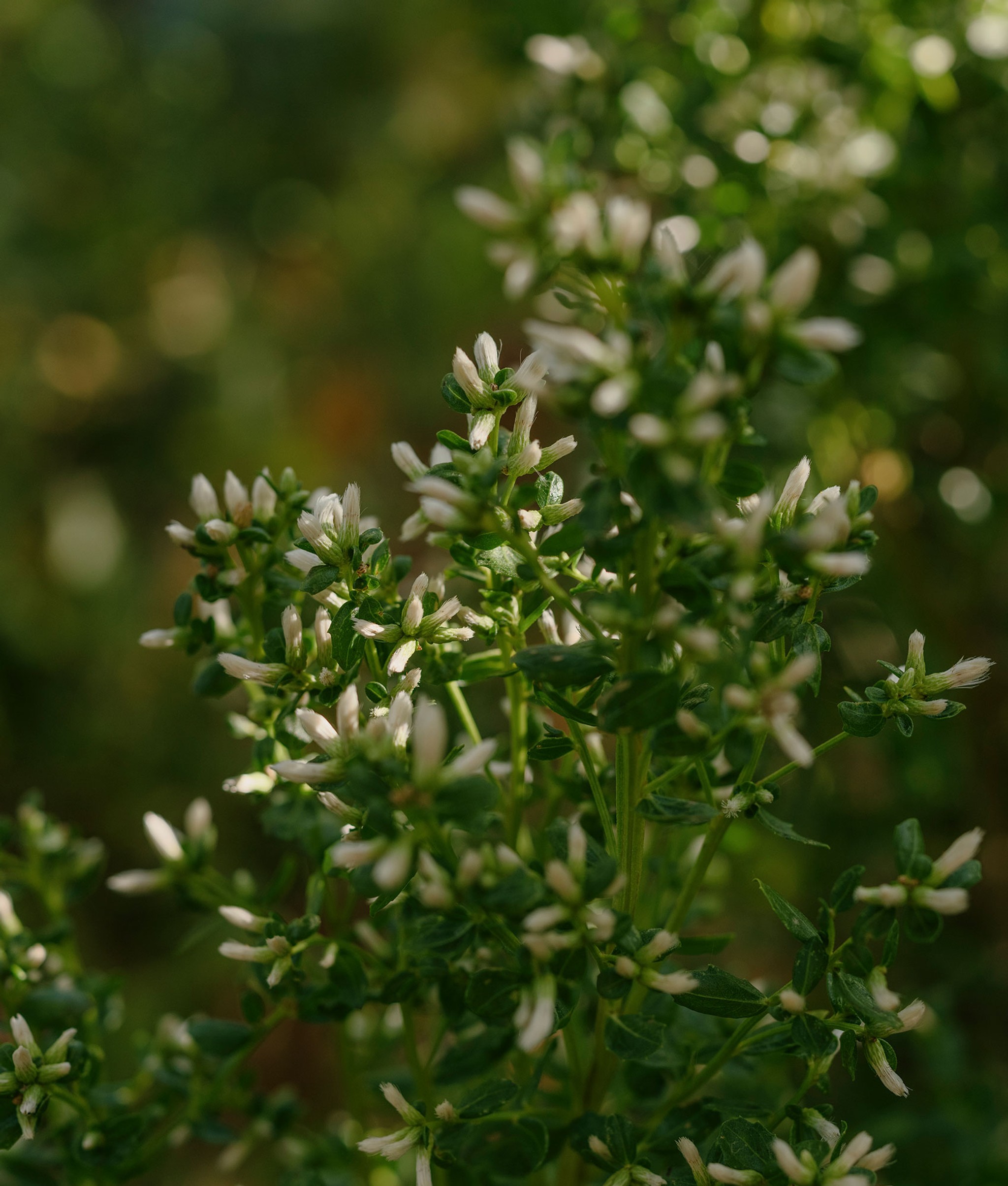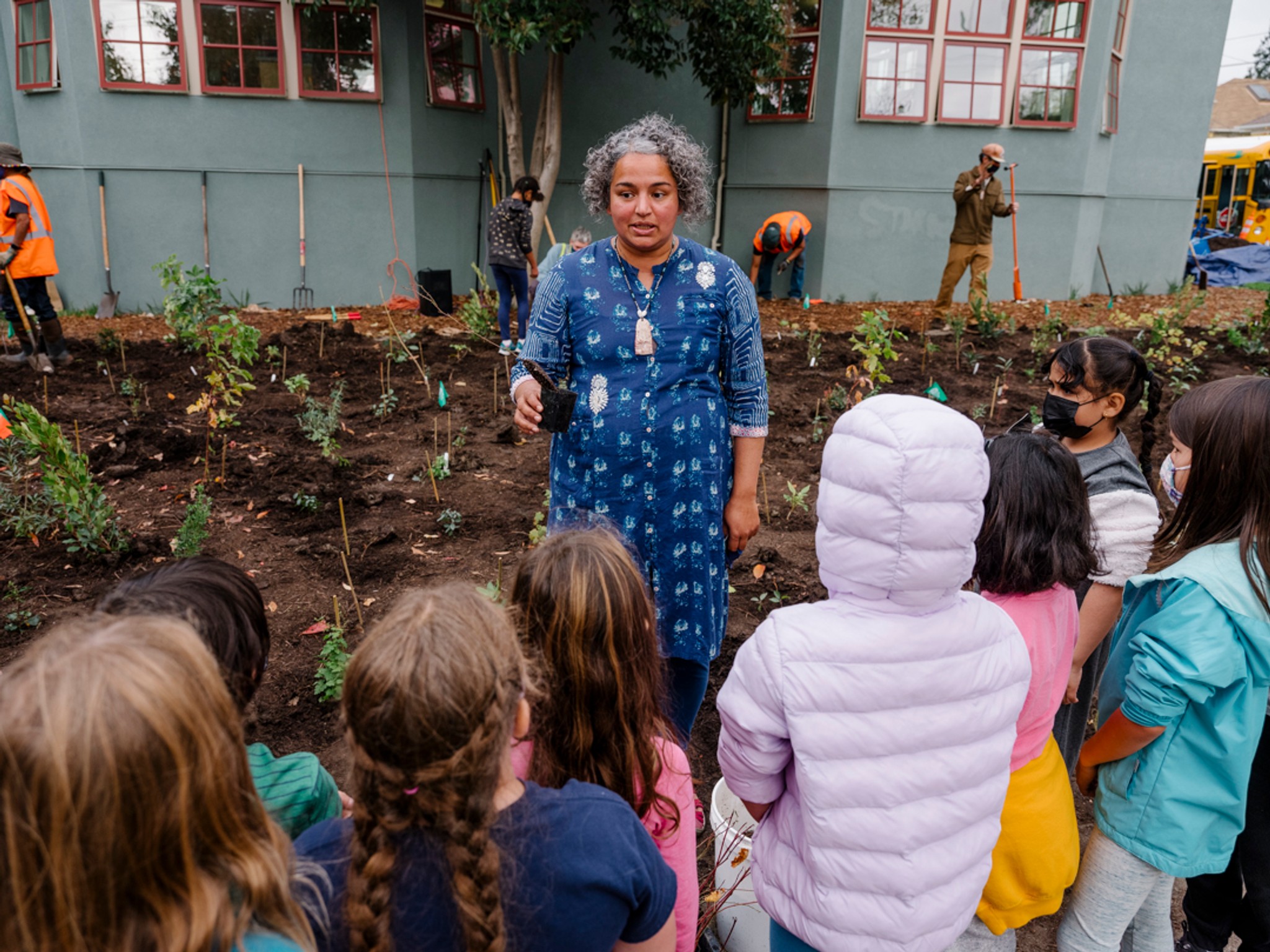Malcolm X Elementary
Outdoor Classrooms for East Bay Students.

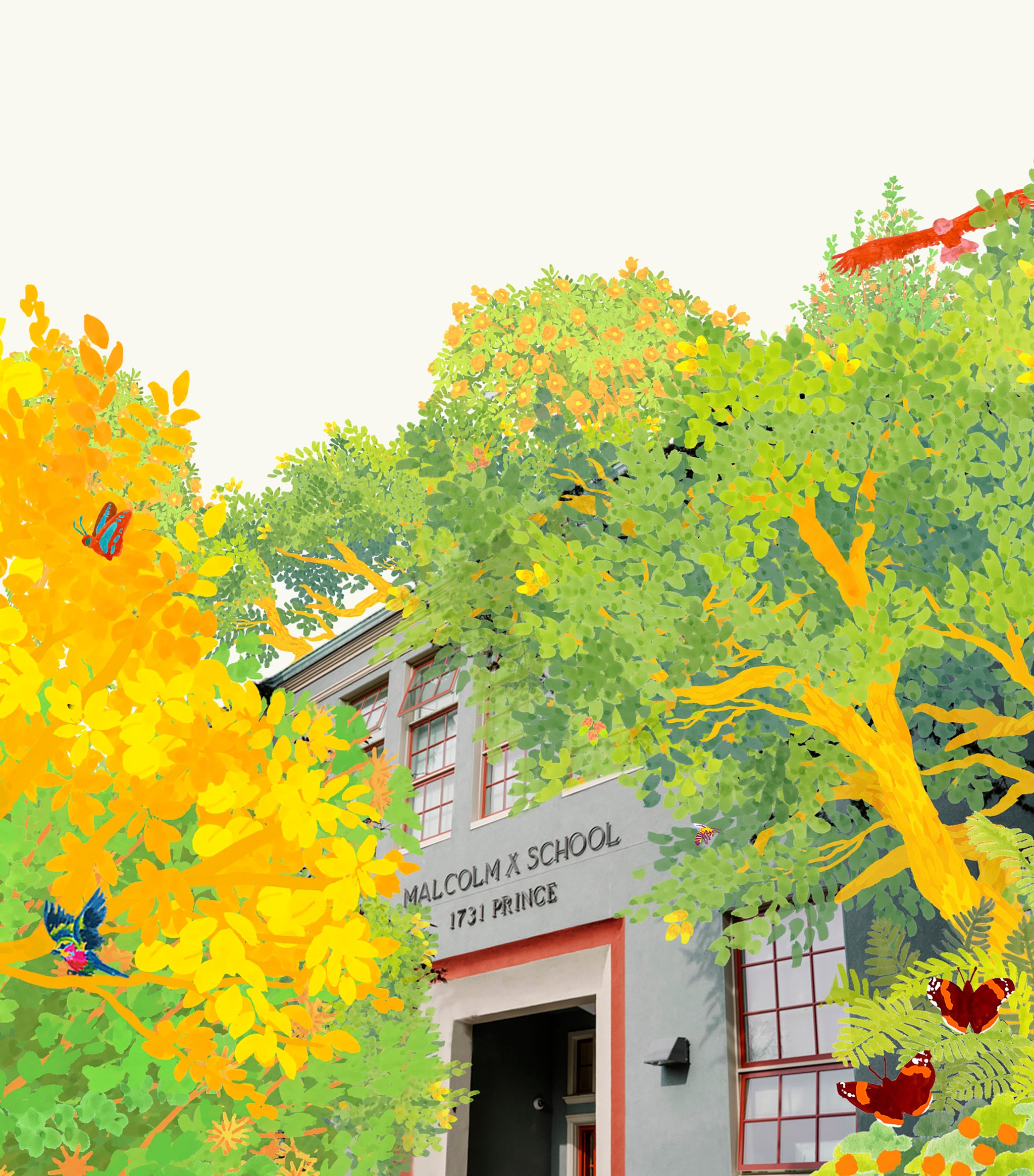
0
Trees
0
Square Feet
0
Native Species
0
Youth Impacted
Self-sustaining Forest
Planted in November 2021, this schoolyard pocket forest has evolved into a complex and diverse ecosystem, transforming a once-unused plot into a thriving natural space.
The evergreen toyon trees (Heteromeles arbutifolia) particularly stand out, their white flowers attracting a variety of pollinators during the summer. In winter, their vibrant clusters of crimson berries provide a late-season food source for the birds seeking refuge in the forest. Leaf-cutting bees (Megachile spp.) have also been spotted, leaving their signature half-moon-shaped holes in the leaves, further highlighting the forest’s growing biodiversity.
The forest is now self-sustaining, no longer requiring additional weeding or watering. Fenced off to protect and contain the space, there is a gated entrance for teachers and students at Malcolm X Elementary.
Forest Maker
Ethan Bryson
Forest Partner


Ecosystem Restored
Final report: 28.11.2024
After approximately three years our SUGi Pocket Forests become self-sustaining. They no longer require human maintenance or watering, and can be handed over to Nature for biodiversity and complexity to naturally develop.
0%
Survival Rate
0
People living within 300 meters
0
kg of potential CO2 sequestration
Biodiversity
Biodiversity is all the different kinds of life you'll find in one area—the variety of animals, plants, fungi, and even microorganisms like bacteria that make up our natural world. Each of these species and organisms work together in ecosystems, like an intricate web, to maintain balance and support life.
0
Potential number of mammals
0
Potential number of birds
0
Potential number of amphibians
Forest Report: 2023
0 Years
Forest Age
0%
Survival Rate
0m
Average of Tallest 3 Trees
It's a jungle in there! The plants are so interconnected and intertwined that it's becoming quite difficult to get into the center of the forest to do the data collection.
The willows are not just tall, they are wide. The biggest willow's lowest branches spread 320cm horizontally in all directions.
It's fall - the deciduous trees are losing their leaves, creating drifts of leaf litter in the most sheltered parts of the forest. Every twig of coyote brush is loaded with feathery white seeds. There are lots of berries on various shrubs; the toyon's red berries are particularly striking. The native blackberries sent out 3 and 4m long tendrils along the ground, which now send fingers down into the earth to root new plants.
The leaf litter is helping retain soil moisture. Digging under the thickest piles of leaves, we found thick fungal mats.
Many leaves have been observed with half circles cut out of them by native leafcutting bees (family Megachilidae).
Biodiversity Notes:
Forest Report: 2022
0 Months
Forest Age
0%
Survival Rate
0m
Average of Tallest 3 Trees
At Malcolm X, we are into our second year of having a Miyawaki Forest. The plants have all grown tremendously since the planting ceremony last year, to all our delight and surprise.We have a new project this year of writing a collective field guide to the plants in there. I am the science teacher for all the 4th and 5th graders who have learned how to classify and identify plants using field guides and dichotomous keys.
We observed the plants from the perimeter of the forest to reduce foot traffic, noticing specific characteristics like leaf margins and venation patterns.We researched the plants on websites, took notes and will paraphrase into our wording for our field guide. With the art teacher, all 180 students will draw detailed sketches of the plants for the field guide.We also will be measuring the plants’ growth throughout the year and charting it.
Last year, we studied the regenerative nature of native forests and took detailed, labeled visual notes of the forest and from Miyawaki TED talks.Other classes have visited the forest, mulched the forest, and written letters to the plants.There is great pride and care of our forest.
Biodiversity Notes:
We have noticed an increase in insects and even found a nest at the base of a young willow.We have heard birds and seen butterflies.
Planting: November 2021













